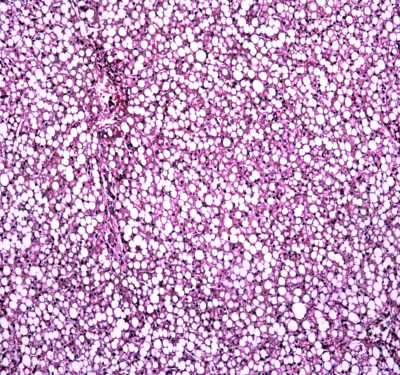Novel proteins implicated in lipid metabolism disorders
A liver protein and the gene that turns it on play a key role in lipid metabolism and could be drug targets for disease.
Published online 31 July 2016

Researchers are discovering new roles for liver proteins in lipid and glucose metabolism, drawing links to several diseases.
© viach80/ iStock / Getty Images Plus
A literature review reveals a growing body of evidence that a protein called ANGPTL3 plays an important role in regulating levels of circulating triglycerides and cholesterol1.
ANGPTL3 is a protein secreted by the liver, belonging to the angiopoietin-like family of eight proteins. Research shows that these proteins play an important role in lipid and glucose metabolism, which varies for each protein during different nutritional states, such as feeding and fasting.
ANGPTL3 acts by causing reversible inhibition of two enzymes during the feeding state: lipoprotein lipase and endothelial lipase.
Gene mutations related to ANGPTL3 lead to inherited lipoprotein disorders, including familial hypobetalipoproteinaemia (FHBL) and familial combined hypolipidaemia.
FHBL is an autosomal dominant lipoprotein disorder that is usually asymptomatic when a person receives only one copy of the mutated gene from a parent. But it can lead to a reduced capacity to form lipoproteins, leading to defective export of very-low-density lipoproteins from the liver and fatty liver. People with this condition can also have fat malabsorption from the intestine.
People with two copies of the mutated gene, on the other hand, suffer from intestinal malabsorption of fats, retinal degeneration, and loss of control of body movements — called ataxia. Treating mice that have an angptl3 gene mutation by introducing recombinant angptl3 or by inducing overproduction of the protein has been found to elevate triglyceride and cholesterol levels.
Familial combined hypolipidaemia is a recently discovered autosomal recessive disorder attributed to mutations in the ANGPLT3 gene, leading to very low serum levels of triglycerides and low- and high-density lipoproteins, but does not seem to be associated with liver abnormalities.
ANGPTL4 is a protein that is activated during fasting, decreasing the release of free fatty acids from circulating triglyceride-rich lipoproteins. After feeding, its expression is decreased, promoting the uptake of dietary lipids in fat tissue. ANGPTL4 has also been found to have a critical role in promoting metastases of melanoma and breast tumour cells.
ANGPTL8 in humans is expressed in the liver and is important in regulating serum triglyceride levels and in replenishing triglyceride stores in fatty tissues. It also promotes the proliferation of pancreatic beta cells and thus insulin secretion. Its levels are reduced by fasting and increased by feeding. A newly identified hormone secreted by skeletal muscles, called irisin, was found to promote ANGPTL8 expression and pancreatic beta cell proliferation and to improve glucose tolerance.
These proteins have emerged as a new class of lipid metabolism modulators that could serve as a potential therapeutic target for reducing plasma lipoproteins and treating metabolic syndrome, writes Mohamed Hassan from Egypt’s Aswan Heart Centre in his review article published in Global Cardiology Science & Practice. Genetic testing could be a useful source for identifying novel genetic causes of inherited lipoprotein disorders and could uncover new therapies to reduce lipid levels, he concludes.Reference
- Hassan, M. ANGPLT3: a novel modulator of lipid metabolism. Glob. Cardiol. Sci. Pract. 2015, 65 (2015). | article
DOI: 10.1038/qsh.2016.121

